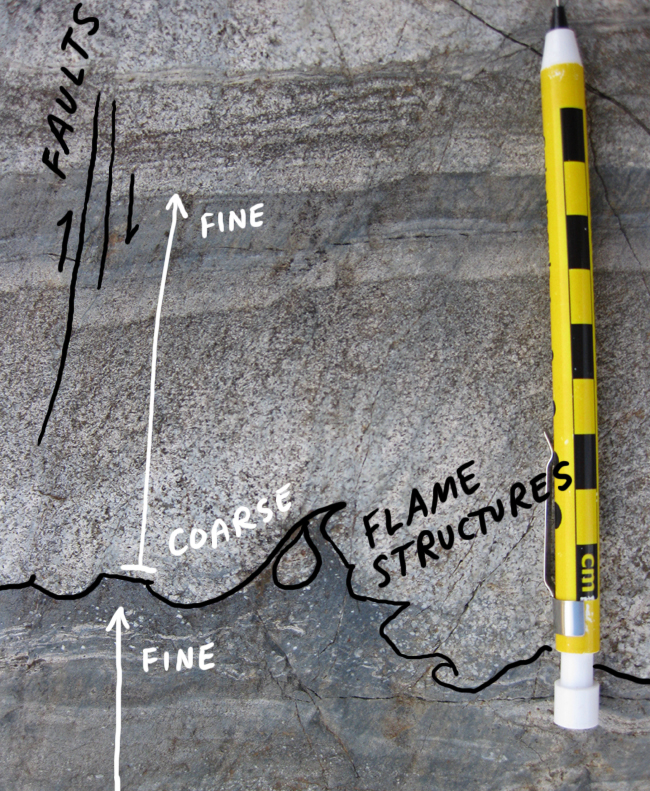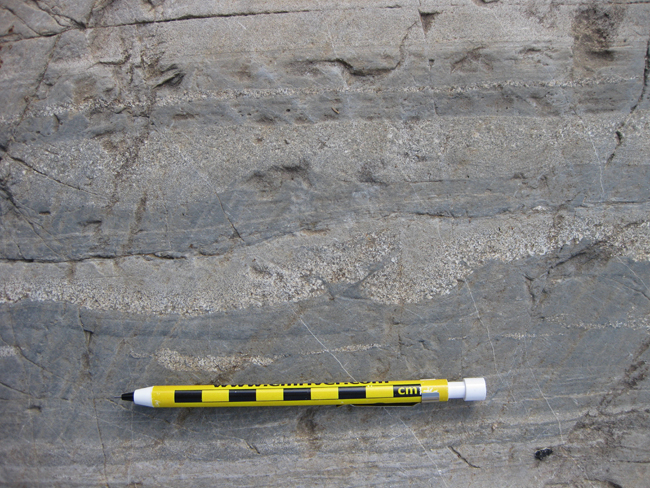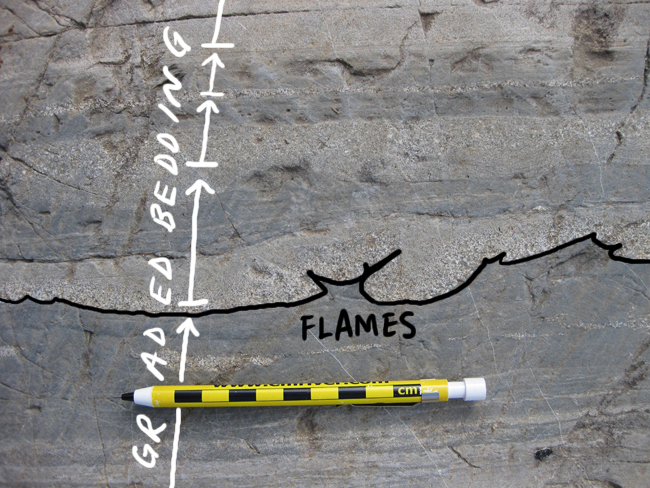This is the final outcrop that we visited on the fall 2011 “Structural Geology of the subprovince boundaries in the Archean Superior Province” field trip that I took just before the fall 2011 annual meeting of the Geological Society of America in Minneapolis. It was a great trip, full of great outcrops, but this one was one of the best. I’m going to split my discussion of the place into two posts – one for the primary structures (today, here), and another later in the week for the secondary (tectonically-induced; deformational) structures.
The Lake Vermillion Formation is well exposed at Pike River Dam in northern Minnesota. It’s a gorgeous succession of turbidite strata. Graded bedding is very common there, and exquisitely photogenic.
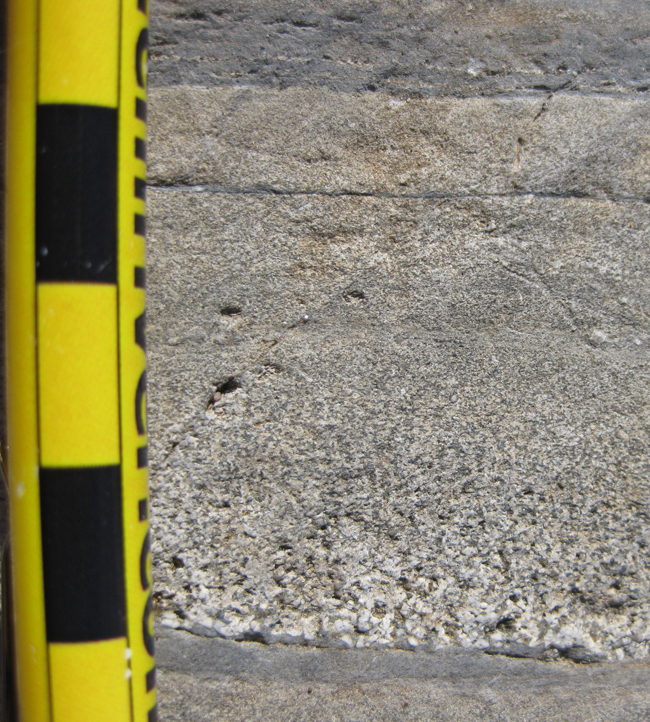
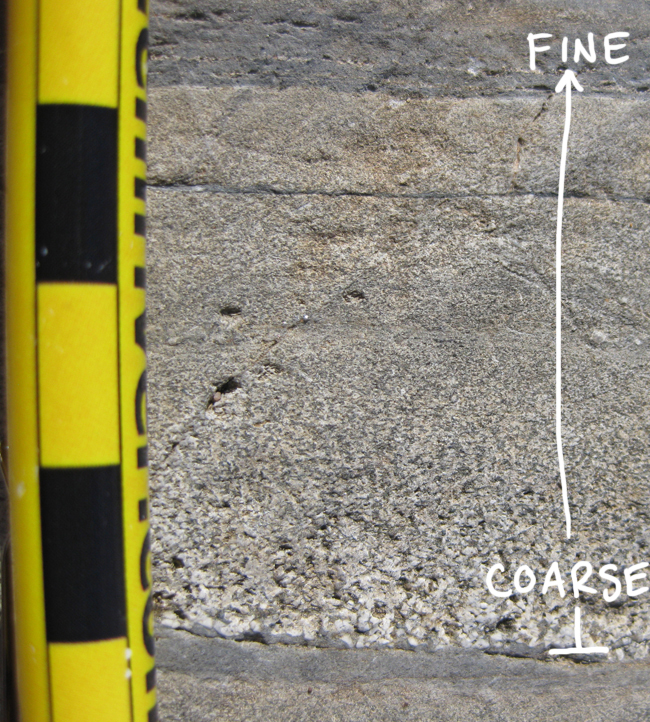
According to the field trip guide, 64% of the 201 graywacke beds in this outcrop exhibit grading, as do 9% of the inter-lying silt beds.
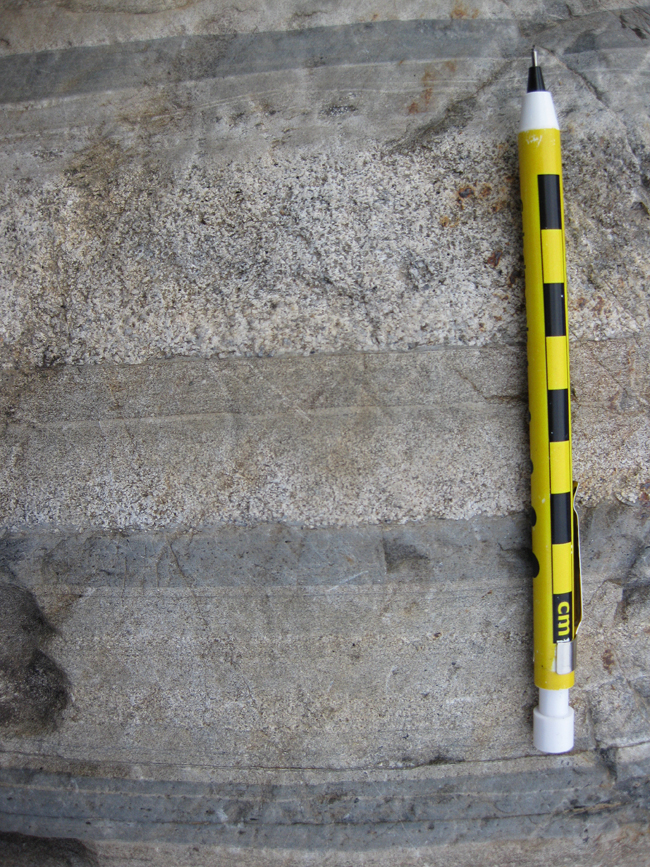
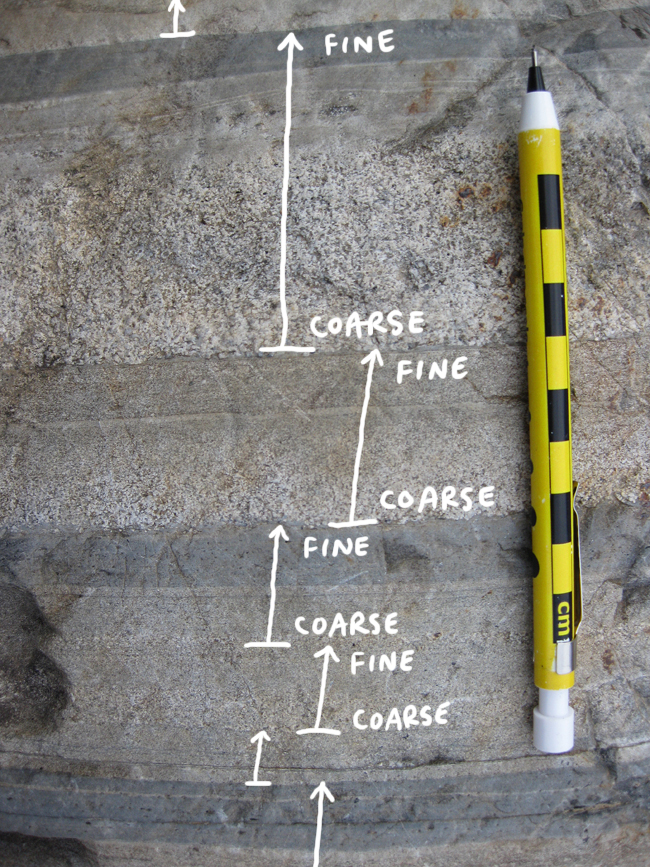
There are also lovely examples of soft-sediment load-induced deformation:
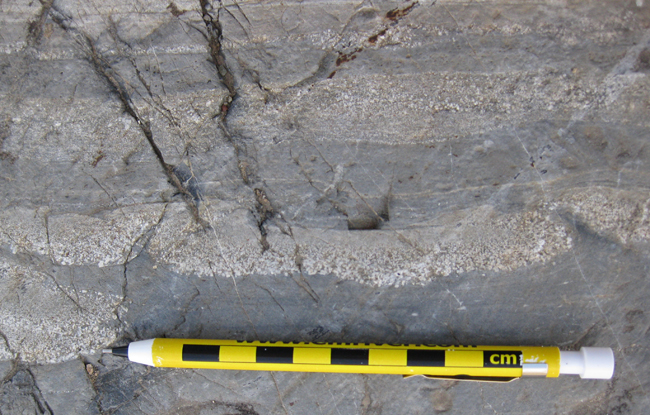
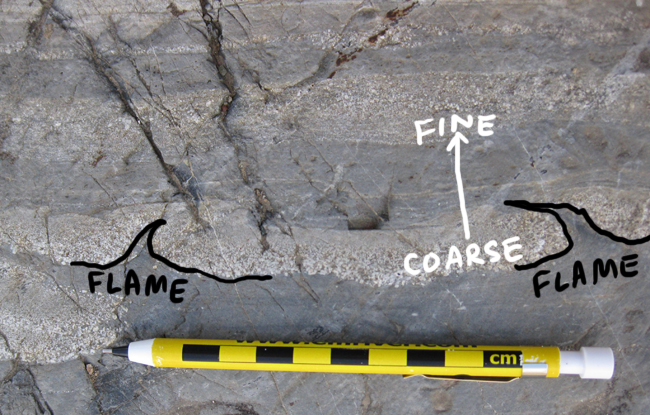
This means that a fresh load of turbidity-current-deposited sand was dumped atop some squishy mud, and the sand sagged downward in broad lobe-like forms, while the less viscous mud squished upward into pointy cusps called “flame structures.”

